-
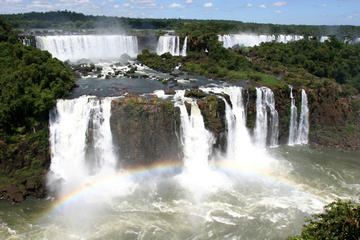 Cataratas do Iguacu (Iguacu Falls)
Cataratas do Iguacu (Iguacu Falls) This spectacular landscape of crashing waterfalls was once held sacred by the Guarani people, who called it Iguassu, or Big Water. It is a UNESCO World Heritage Site and one of the Seven Wonders of the World, an enormous basalt staircase streaked with some 275 ca
Cataratas do Iguacu (Iguacu Falls)
Cataratas do Iguacu (Iguacu Falls) This spectacular landscape of crashing waterfalls was once held sacred by the Guarani people, who called it Iguassu, or Big Water. It is a UNESCO World Heritage Site and one of the Seven Wonders of the World, an enormous basalt staircase streaked with some 275 ca
-
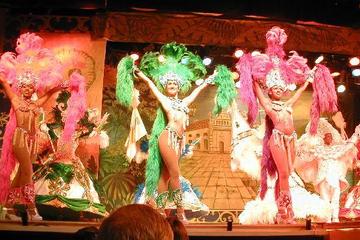 Plataforma
Plataforma It might not be Carnaval time in Rio but it is always Carnaval time at Plataforma. This lively Brazilian restaurant is where to get your fix of razzle and dazzle all year round. The colorful show tells the story of Brazils history (with Portuguese, Indian and African influences) through
Plataforma
Plataforma It might not be Carnaval time in Rio but it is always Carnaval time at Plataforma. This lively Brazilian restaurant is where to get your fix of razzle and dazzle all year round. The colorful show tells the story of Brazils history (with Portuguese, Indian and African influences) through
-
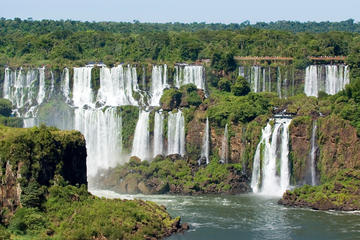 Iguassu Falls
Iguassu Falls This spectacular landscape of crashing waterfalls was once held sacred by the Guarani people, who called it Iguassu, or Big Water. Straddling the border of Brazil and Argentina, Iguassu Falls is an enormous basalt staircase streaked with some 275 cascades, rising shear and gray from
Iguassu Falls
Iguassu Falls This spectacular landscape of crashing waterfalls was once held sacred by the Guarani people, who called it Iguassu, or Big Water. Straddling the border of Brazil and Argentina, Iguassu Falls is an enormous basalt staircase streaked with some 275 cascades, rising shear and gray from
-
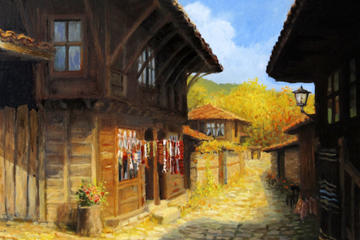 National Fine Arts Museum
National Fine Arts Museum Set in an impressive neoclassical building in downtown Rio de Janeiro that harkens back to an era when the city was a national—and imperial—capital, the National Fine Arts Museum (Museu Nacional de Belas Artes) houses over 16,000 artworks created by Brazilian painters, sc
National Fine Arts Museum
National Fine Arts Museum Set in an impressive neoclassical building in downtown Rio de Janeiro that harkens back to an era when the city was a national—and imperial—capital, the National Fine Arts Museum (Museu Nacional de Belas Artes) houses over 16,000 artworks created by Brazilian painters, sc
-
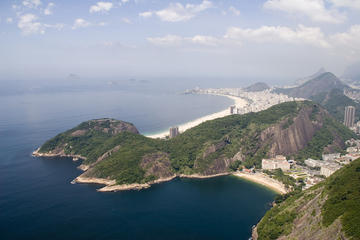 Morro da Urca
Morro da Urca Sitting in the shadow of big brother and Rio de Janeiro icon, Sugar Loaf Mountain, the Morro da Urca is just as important if only because the cable car trip up to Sugar Loaf includes a stop atop this turtle shell-shaped rock. Not to be outdone by its better-known neighbor, the 720-fo
Morro da Urca
Morro da Urca Sitting in the shadow of big brother and Rio de Janeiro icon, Sugar Loaf Mountain, the Morro da Urca is just as important if only because the cable car trip up to Sugar Loaf includes a stop atop this turtle shell-shaped rock. Not to be outdone by its better-known neighbor, the 720-fo
-
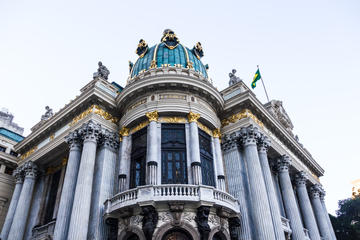 Teatro Municipal
Teatro Municipal Having reopened in 2010 after an exhaustive $35 million renovation, the stunning Teatro Municipal in downtown Rio de Janeiro looks as well-crafted and intricately designed as a Carnival float. Golden statues on the roof sparkle in the tropical sunshine while stately neoclassical c
Teatro Municipal
Teatro Municipal Having reopened in 2010 after an exhaustive $35 million renovation, the stunning Teatro Municipal in downtown Rio de Janeiro looks as well-crafted and intricately designed as a Carnival float. Golden statues on the roof sparkle in the tropical sunshine while stately neoclassical c
-
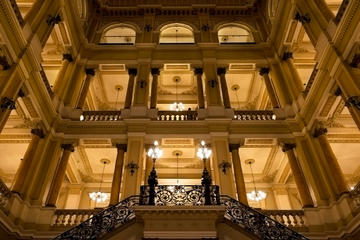 National Library
National Library Holding over 9 million volumes within its stacks and archives, Brazil’s extensive National Library (Biblioteca Nacional) is the largest library in Latin America and remains one of the first institutions established during Rio’s reign as imperial capital of the United Kingdom of Po
National Library
National Library Holding over 9 million volumes within its stacks and archives, Brazil’s extensive National Library (Biblioteca Nacional) is the largest library in Latin America and remains one of the first institutions established during Rio’s reign as imperial capital of the United Kingdom of Po
-
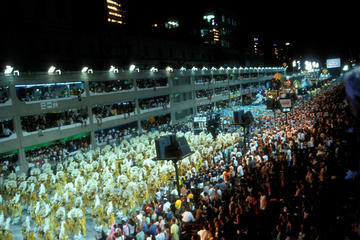 Sambadrome
Sambadrome At Carnival time the Sambadrome is the heartbeat of Rio de Janiero. A 3,000ft (700m) stretch of road designed as a 90,000 capacity parade area with stadium seating rising on each side of the road. Samba schools have 80 minutes to parade through the center of the Sambadrome performing th
Sambadrome
Sambadrome At Carnival time the Sambadrome is the heartbeat of Rio de Janiero. A 3,000ft (700m) stretch of road designed as a 90,000 capacity parade area with stadium seating rising on each side of the road. Samba schools have 80 minutes to parade through the center of the Sambadrome performing th
-
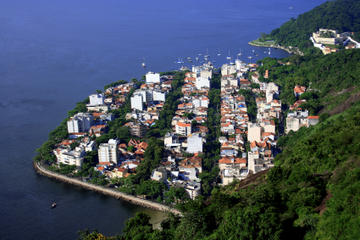 Urca
Urca Squeezed on a curved slice of land at the foot of Sugar Loaf Mountain and its shorter, wider companion at the other end of the cable car, tiny Urca remains one of Rio’s most unique neighborhoods in that it has retained its intimate feel and close-knit character for decades, despite rapid and
Urca
Urca Squeezed on a curved slice of land at the foot of Sugar Loaf Mountain and its shorter, wider companion at the other end of the cable car, tiny Urca remains one of Rio’s most unique neighborhoods in that it has retained its intimate feel and close-knit character for decades, despite rapid and
-
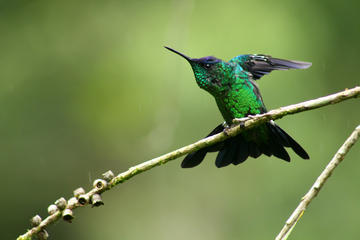 Atlantic Forest (Mata Atlântica)
Atlantic Forest (Mata Atlântica) The Atlantic Forest, or Mata Atlantica Biosphere Reserve, covers 14 states and spreads over more than 20,000 acres in Brazil. It’s formed of the remnants of a larger terrestrial ecosystem that once ran down the countrys eastern coast, extending 3,000 km from Rio Gr
Atlantic Forest (Mata Atlântica)
Atlantic Forest (Mata Atlântica) The Atlantic Forest, or Mata Atlantica Biosphere Reserve, covers 14 states and spreads over more than 20,000 acres in Brazil. It’s formed of the remnants of a larger terrestrial ecosystem that once ran down the countrys eastern coast, extending 3,000 km from Rio Gr
-
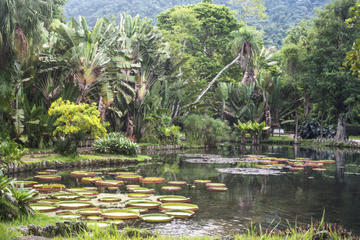 January Ecological Park
January Ecological Park Giant water lilies, flooded forests, fertile lowlands and rare wildlife are just part of what makes the 9,000-acre January Ecological Park a destination for travelers. Visitors can navigate the relaxing waters known for its massive lily pads—some measuring more than seven f
January Ecological Park
January Ecological Park Giant water lilies, flooded forests, fertile lowlands and rare wildlife are just part of what makes the 9,000-acre January Ecological Park a destination for travelers. Visitors can navigate the relaxing waters known for its massive lily pads—some measuring more than seven f
-
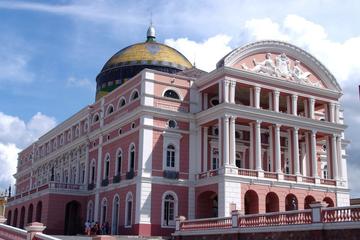 Teatro Amazonas Opera House
Teatro Amazonas Opera House Much of the wealth of Manaus came from its days as the regions major port city during the rubber boom. That era was also known for its beautiful architecture - and a fine example of that Belle Epoque style of the late 1800s is Manaus opera house, the Teatro Amazonas.The
Teatro Amazonas Opera House
Teatro Amazonas Opera House Much of the wealth of Manaus came from its days as the regions major port city during the rubber boom. That era was also known for its beautiful architecture - and a fine example of that Belle Epoque style of the late 1800s is Manaus opera house, the Teatro Amazonas.The
-
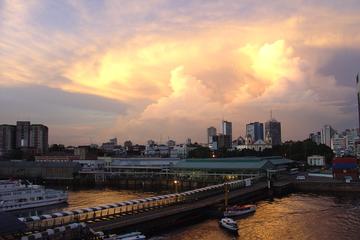 Port of Manaus (Porto Flutuante)
Port of Manaus (Porto Flutuante) The city of Manaus is home to a busy commercial and cruise port, but luckily for visitors the port itself is right downtown. This means you can make the most of even a short stop in Manaus without spending too much time getting back and forth to and from your ship.
Port of Manaus (Porto Flutuante)
Port of Manaus (Porto Flutuante) The city of Manaus is home to a busy commercial and cruise port, but luckily for visitors the port itself is right downtown. This means you can make the most of even a short stop in Manaus without spending too much time getting back and forth to and from your ship.
-
 Amazon Rainforest
Amazon Rainforest Trying to fathom the Amazon’s size is a lesson in mental futility. You can read all the Amazon stats that you want—like the fact that the Amazon has more acres of land than China or India have people, or that 20% of the world’s oxygen is produced from the Amazon’s trees—but until
Amazon Rainforest
Amazon Rainforest Trying to fathom the Amazon’s size is a lesson in mental futility. You can read all the Amazon stats that you want—like the fact that the Amazon has more acres of land than China or India have people, or that 20% of the world’s oxygen is produced from the Amazon’s trees—but until
-
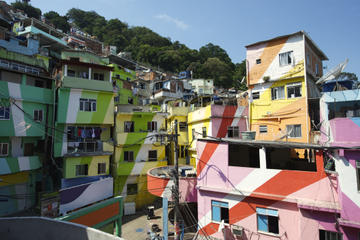 Santa Marta Favela
Santa Marta Favela The first of the city’s “pacified” (police-controlled) favelas, Santa Marta is one of the few that is safe and accessible to tourists, with tours aimed at raising awareness and funds to help improve the safety and living conditions of Rio’s notorious slums. Santa Marta Fave
Santa Marta Favela
Santa Marta Favela The first of the city’s “pacified” (police-controlled) favelas, Santa Marta is one of the few that is safe and accessible to tourists, with tours aimed at raising awareness and funds to help improve the safety and living conditions of Rio’s notorious slums. Santa Marta Fave
-
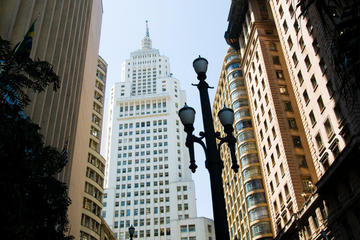 Altino Arantes Building (Banespa Tower)
Altino Arantes Building (Banespa Tower) An enduring symbol of São Paulo’s 20th-century race to modernity, the Edifício Altino Arantes—more commonly known as the Banespa Tower or Banespão—remains one of the most notable landmarks on the city’s exhaustive skyline. Originally built as the headquarter
Altino Arantes Building (Banespa Tower)
Altino Arantes Building (Banespa Tower) An enduring symbol of São Paulo’s 20th-century race to modernity, the Edifício Altino Arantes—more commonly known as the Banespa Tower or Banespão—remains one of the most notable landmarks on the city’s exhaustive skyline. Originally built as the headquarter
-
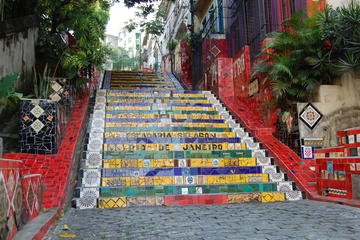 Santa Teresa
Santa Teresa This unlikely cobblestoned neighborhood close to the center of Rio de Janeiro has long been a tourist favorite among visitors to this Brazilian city. Santa Teresa is located on the top of the hill of the same name, and takes its name from a convent built in the 1750s. It has a history
Santa Teresa
Santa Teresa This unlikely cobblestoned neighborhood close to the center of Rio de Janeiro has long been a tourist favorite among visitors to this Brazilian city. Santa Teresa is located on the top of the hill of the same name, and takes its name from a convent built in the 1750s. It has a history
-
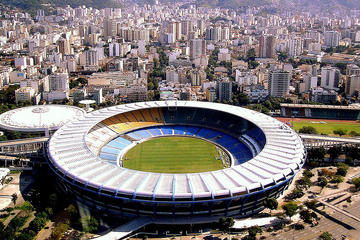 Maracana Stadium
Maracana Stadium The gigantic Maracanã Stadium was built to open the 1950 World Cup. It holds the record for the largest attendance at a World cup final as 199,854 paying spectators crammed into the stadium and many more besides. If you’re after the intense Brazilian football experience complete
Maracana Stadium
Maracana Stadium The gigantic Maracanã Stadium was built to open the 1950 World Cup. It holds the record for the largest attendance at a World cup final as 199,854 paying spectators crammed into the stadium and many more besides. If you’re after the intense Brazilian football experience complete
-
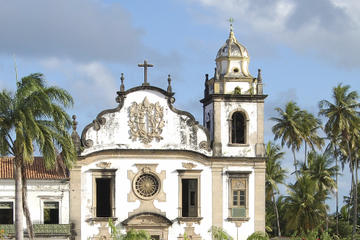 Sao Bento Monastery
Sao Bento Monastery From the outside, the Sao Bento Monastery and the Church of Nossa Senhora de Montserrat appear to be unassuming and even a bit austere, a nod to 16th century Roman Catholic chastity. Once inside, however, visitors can see how the elaborate nave, filigreed altar, and rococo wood
Sao Bento Monastery
Sao Bento Monastery From the outside, the Sao Bento Monastery and the Church of Nossa Senhora de Montserrat appear to be unassuming and even a bit austere, a nod to 16th century Roman Catholic chastity. Once inside, however, visitors can see how the elaborate nave, filigreed altar, and rococo wood
-
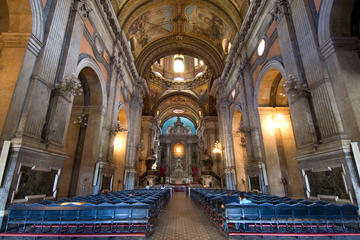 Church of Our Lady of Candelaria
Church of Our Lady of Candelaria Once the tallest structure in all of Rio de Janeiro, the Church of Our Lady of Candelaria, with its striking combination of Baroque, Neoclassical, and Neo-Renaissance design styles, has a marred history. In modern times, the cathedral is best known for the cold-blo
Church of Our Lady of Candelaria
Church of Our Lady of Candelaria Once the tallest structure in all of Rio de Janeiro, the Church of Our Lady of Candelaria, with its striking combination of Baroque, Neoclassical, and Neo-Renaissance design styles, has a marred history. In modern times, the cathedral is best known for the cold-blo
Total
1166 -travel
FirstPage PreviousPage NextPage LastPage CurrentPage:
9/59 20-travel/Page GoTo Page:
 Cataratas do Iguacu (Iguacu Falls)
Cataratas do Iguacu (Iguacu Falls) This spectacular landscape of crashing waterfalls was once held sacred by the Guarani people, who called it Iguassu, or Big Water. It is a UNESCO World Heritage Site and one of the Seven Wonders of the World, an enormous basalt staircase streaked with some 275 ca
Cataratas do Iguacu (Iguacu Falls)
Cataratas do Iguacu (Iguacu Falls) This spectacular landscape of crashing waterfalls was once held sacred by the Guarani people, who called it Iguassu, or Big Water. It is a UNESCO World Heritage Site and one of the Seven Wonders of the World, an enormous basalt staircase streaked with some 275 ca
 Plataforma
Plataforma It might not be Carnaval time in Rio but it is always Carnaval time at Plataforma. This lively Brazilian restaurant is where to get your fix of razzle and dazzle all year round. The colorful show tells the story of Brazils history (with Portuguese, Indian and African influences) through
Plataforma
Plataforma It might not be Carnaval time in Rio but it is always Carnaval time at Plataforma. This lively Brazilian restaurant is where to get your fix of razzle and dazzle all year round. The colorful show tells the story of Brazils history (with Portuguese, Indian and African influences) through
 Iguassu Falls
Iguassu Falls This spectacular landscape of crashing waterfalls was once held sacred by the Guarani people, who called it Iguassu, or Big Water. Straddling the border of Brazil and Argentina, Iguassu Falls is an enormous basalt staircase streaked with some 275 cascades, rising shear and gray from
Iguassu Falls
Iguassu Falls This spectacular landscape of crashing waterfalls was once held sacred by the Guarani people, who called it Iguassu, or Big Water. Straddling the border of Brazil and Argentina, Iguassu Falls is an enormous basalt staircase streaked with some 275 cascades, rising shear and gray from
 National Fine Arts Museum
National Fine Arts Museum Set in an impressive neoclassical building in downtown Rio de Janeiro that harkens back to an era when the city was a national—and imperial—capital, the National Fine Arts Museum (Museu Nacional de Belas Artes) houses over 16,000 artworks created by Brazilian painters, sc
National Fine Arts Museum
National Fine Arts Museum Set in an impressive neoclassical building in downtown Rio de Janeiro that harkens back to an era when the city was a national—and imperial—capital, the National Fine Arts Museum (Museu Nacional de Belas Artes) houses over 16,000 artworks created by Brazilian painters, sc
 Morro da Urca
Morro da Urca Sitting in the shadow of big brother and Rio de Janeiro icon, Sugar Loaf Mountain, the Morro da Urca is just as important if only because the cable car trip up to Sugar Loaf includes a stop atop this turtle shell-shaped rock. Not to be outdone by its better-known neighbor, the 720-fo
Morro da Urca
Morro da Urca Sitting in the shadow of big brother and Rio de Janeiro icon, Sugar Loaf Mountain, the Morro da Urca is just as important if only because the cable car trip up to Sugar Loaf includes a stop atop this turtle shell-shaped rock. Not to be outdone by its better-known neighbor, the 720-fo
 Teatro Municipal
Teatro Municipal Having reopened in 2010 after an exhaustive $35 million renovation, the stunning Teatro Municipal in downtown Rio de Janeiro looks as well-crafted and intricately designed as a Carnival float. Golden statues on the roof sparkle in the tropical sunshine while stately neoclassical c
Teatro Municipal
Teatro Municipal Having reopened in 2010 after an exhaustive $35 million renovation, the stunning Teatro Municipal in downtown Rio de Janeiro looks as well-crafted and intricately designed as a Carnival float. Golden statues on the roof sparkle in the tropical sunshine while stately neoclassical c
 National Library
National Library Holding over 9 million volumes within its stacks and archives, Brazil’s extensive National Library (Biblioteca Nacional) is the largest library in Latin America and remains one of the first institutions established during Rio’s reign as imperial capital of the United Kingdom of Po
National Library
National Library Holding over 9 million volumes within its stacks and archives, Brazil’s extensive National Library (Biblioteca Nacional) is the largest library in Latin America and remains one of the first institutions established during Rio’s reign as imperial capital of the United Kingdom of Po
 Sambadrome
Sambadrome At Carnival time the Sambadrome is the heartbeat of Rio de Janiero. A 3,000ft (700m) stretch of road designed as a 90,000 capacity parade area with stadium seating rising on each side of the road. Samba schools have 80 minutes to parade through the center of the Sambadrome performing th
Sambadrome
Sambadrome At Carnival time the Sambadrome is the heartbeat of Rio de Janiero. A 3,000ft (700m) stretch of road designed as a 90,000 capacity parade area with stadium seating rising on each side of the road. Samba schools have 80 minutes to parade through the center of the Sambadrome performing th
 Urca
Urca Squeezed on a curved slice of land at the foot of Sugar Loaf Mountain and its shorter, wider companion at the other end of the cable car, tiny Urca remains one of Rio’s most unique neighborhoods in that it has retained its intimate feel and close-knit character for decades, despite rapid and
Urca
Urca Squeezed on a curved slice of land at the foot of Sugar Loaf Mountain and its shorter, wider companion at the other end of the cable car, tiny Urca remains one of Rio’s most unique neighborhoods in that it has retained its intimate feel and close-knit character for decades, despite rapid and
 Atlantic Forest (Mata Atlântica)
Atlantic Forest (Mata Atlântica) The Atlantic Forest, or Mata Atlantica Biosphere Reserve, covers 14 states and spreads over more than 20,000 acres in Brazil. It’s formed of the remnants of a larger terrestrial ecosystem that once ran down the countrys eastern coast, extending 3,000 km from Rio Gr
Atlantic Forest (Mata Atlântica)
Atlantic Forest (Mata Atlântica) The Atlantic Forest, or Mata Atlantica Biosphere Reserve, covers 14 states and spreads over more than 20,000 acres in Brazil. It’s formed of the remnants of a larger terrestrial ecosystem that once ran down the countrys eastern coast, extending 3,000 km from Rio Gr
 January Ecological Park
January Ecological Park Giant water lilies, flooded forests, fertile lowlands and rare wildlife are just part of what makes the 9,000-acre January Ecological Park a destination for travelers. Visitors can navigate the relaxing waters known for its massive lily pads—some measuring more than seven f
January Ecological Park
January Ecological Park Giant water lilies, flooded forests, fertile lowlands and rare wildlife are just part of what makes the 9,000-acre January Ecological Park a destination for travelers. Visitors can navigate the relaxing waters known for its massive lily pads—some measuring more than seven f
 Teatro Amazonas Opera House
Teatro Amazonas Opera House Much of the wealth of Manaus came from its days as the regions major port city during the rubber boom. That era was also known for its beautiful architecture - and a fine example of that Belle Epoque style of the late 1800s is Manaus opera house, the Teatro Amazonas.The
Teatro Amazonas Opera House
Teatro Amazonas Opera House Much of the wealth of Manaus came from its days as the regions major port city during the rubber boom. That era was also known for its beautiful architecture - and a fine example of that Belle Epoque style of the late 1800s is Manaus opera house, the Teatro Amazonas.The
 Port of Manaus (Porto Flutuante)
Port of Manaus (Porto Flutuante) The city of Manaus is home to a busy commercial and cruise port, but luckily for visitors the port itself is right downtown. This means you can make the most of even a short stop in Manaus without spending too much time getting back and forth to and from your ship.
Port of Manaus (Porto Flutuante)
Port of Manaus (Porto Flutuante) The city of Manaus is home to a busy commercial and cruise port, but luckily for visitors the port itself is right downtown. This means you can make the most of even a short stop in Manaus without spending too much time getting back and forth to and from your ship.
 Amazon Rainforest
Amazon Rainforest Trying to fathom the Amazon’s size is a lesson in mental futility. You can read all the Amazon stats that you want—like the fact that the Amazon has more acres of land than China or India have people, or that 20% of the world’s oxygen is produced from the Amazon’s trees—but until
Amazon Rainforest
Amazon Rainforest Trying to fathom the Amazon’s size is a lesson in mental futility. You can read all the Amazon stats that you want—like the fact that the Amazon has more acres of land than China or India have people, or that 20% of the world’s oxygen is produced from the Amazon’s trees—but until
 Santa Marta Favela
Santa Marta Favela The first of the city’s “pacified” (police-controlled) favelas, Santa Marta is one of the few that is safe and accessible to tourists, with tours aimed at raising awareness and funds to help improve the safety and living conditions of Rio’s notorious slums. Santa Marta Fave
Santa Marta Favela
Santa Marta Favela The first of the city’s “pacified” (police-controlled) favelas, Santa Marta is one of the few that is safe and accessible to tourists, with tours aimed at raising awareness and funds to help improve the safety and living conditions of Rio’s notorious slums. Santa Marta Fave
 Altino Arantes Building (Banespa Tower)
Altino Arantes Building (Banespa Tower) An enduring symbol of São Paulo’s 20th-century race to modernity, the Edifício Altino Arantes—more commonly known as the Banespa Tower or Banespão—remains one of the most notable landmarks on the city’s exhaustive skyline. Originally built as the headquarter
Altino Arantes Building (Banespa Tower)
Altino Arantes Building (Banespa Tower) An enduring symbol of São Paulo’s 20th-century race to modernity, the Edifício Altino Arantes—more commonly known as the Banespa Tower or Banespão—remains one of the most notable landmarks on the city’s exhaustive skyline. Originally built as the headquarter
 Santa Teresa
Santa Teresa This unlikely cobblestoned neighborhood close to the center of Rio de Janeiro has long been a tourist favorite among visitors to this Brazilian city. Santa Teresa is located on the top of the hill of the same name, and takes its name from a convent built in the 1750s. It has a history
Santa Teresa
Santa Teresa This unlikely cobblestoned neighborhood close to the center of Rio de Janeiro has long been a tourist favorite among visitors to this Brazilian city. Santa Teresa is located on the top of the hill of the same name, and takes its name from a convent built in the 1750s. It has a history
 Maracana Stadium
Maracana Stadium The gigantic Maracanã Stadium was built to open the 1950 World Cup. It holds the record for the largest attendance at a World cup final as 199,854 paying spectators crammed into the stadium and many more besides. If you’re after the intense Brazilian football experience complete
Maracana Stadium
Maracana Stadium The gigantic Maracanã Stadium was built to open the 1950 World Cup. It holds the record for the largest attendance at a World cup final as 199,854 paying spectators crammed into the stadium and many more besides. If you’re after the intense Brazilian football experience complete
 Sao Bento Monastery
Sao Bento Monastery From the outside, the Sao Bento Monastery and the Church of Nossa Senhora de Montserrat appear to be unassuming and even a bit austere, a nod to 16th century Roman Catholic chastity. Once inside, however, visitors can see how the elaborate nave, filigreed altar, and rococo wood
Sao Bento Monastery
Sao Bento Monastery From the outside, the Sao Bento Monastery and the Church of Nossa Senhora de Montserrat appear to be unassuming and even a bit austere, a nod to 16th century Roman Catholic chastity. Once inside, however, visitors can see how the elaborate nave, filigreed altar, and rococo wood
 Church of Our Lady of Candelaria
Church of Our Lady of Candelaria Once the tallest structure in all of Rio de Janeiro, the Church of Our Lady of Candelaria, with its striking combination of Baroque, Neoclassical, and Neo-Renaissance design styles, has a marred history. In modern times, the cathedral is best known for the cold-blo
Church of Our Lady of Candelaria
Church of Our Lady of Candelaria Once the tallest structure in all of Rio de Janeiro, the Church of Our Lady of Candelaria, with its striking combination of Baroque, Neoclassical, and Neo-Renaissance design styles, has a marred history. In modern times, the cathedral is best known for the cold-blo